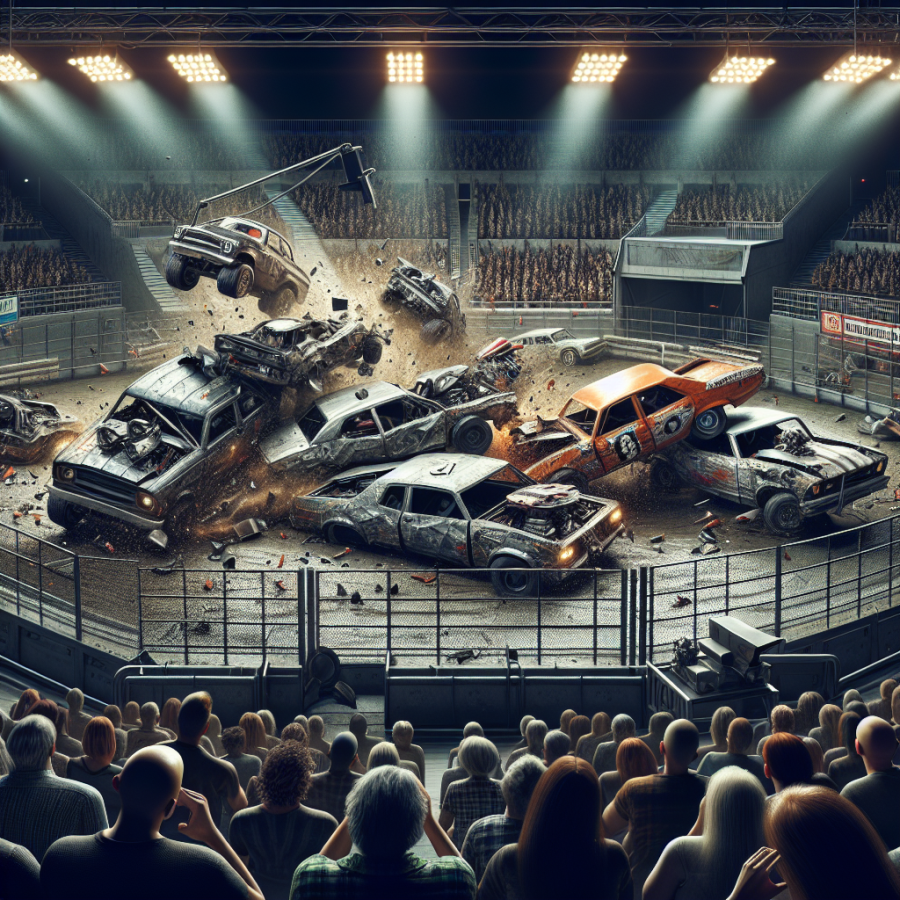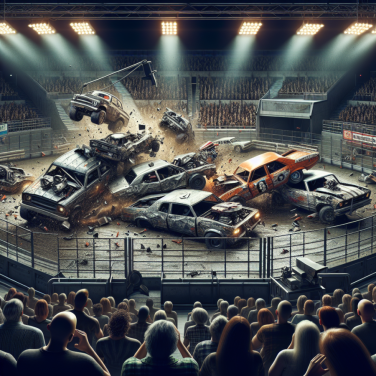Behind the Scenes: Understanding the Art and Strategy of Demolition Derby
Demolition derbies, often heralded as a raucous blend of metal and mayhem, are far more than meets the eye. To the uninitiated, these events may seem like chaotic clashes of vehicular gladiators, but to the veterans of the arena and the strategists behind the scenes, they represent a high-octane chess match that requires keen insight, meticulous preparation, and a deep understanding of the craft.
At the heart of demolition derby is the vehicle preparation. Experienced participants spend countless hours transforming everyday cars into fortified battering rams. This transformation isn't merely about stripping the car of its fragile components; it’s a thoughtful process of reinforcing the frame and devising protective layers for vital mechanical parts. Engine placement might be adjusted to avoid damage, while deliberate welding reinforces structural integrity against the continual battering it’s destined to receive.
Beyond the physical alterations, demolition derby drivers must be astute in selecting their cars. Not all vehicles are equal in the derby domain. Some favor older, heavier models for their robust frames, while others look for agility and maneuverability, finding an advantage in being able to dart away from impending collisions. Seasoned drivers often have preferred makes and models, and they hold trade secrets on the best ways to optimize these vehicles for survival and offensive capability.
Strategically, there is a complex web of decision-making that extends well beyond the simple goal of smashing into opponents. Wise drivers know when to unleash full-force impacts and when to play defensively, maneuvering around the chaos preserving their vehicle's integrity for the endgame. Positioning within the arena, targeting specific opponents, and even forming temporary alliances are layers of strategy that can be as crucial as the mechanical robustness of the demolition contenders.
Fueling all this preparation is the motive of self-preservation—drivers suit up not only with the intention to last but also to protect themselves. Safety measures are of paramount importance. Harnesses, roll cages, fire-resistant clothing, and helmets are mandatory, ensuring that while the cars may emerge in twisted heaps, the combatants walk away with stories rather than scars.
In the stands, the spectacle is the selling point, but down in the pit, an air of camaraderie often prevails. Competitors share techniques, tools, and sometimes even spare parts. The shared passion for the sport fosters a community that respects the rigors and intellect that demolition derby demands.
Read also:
Scoring Goals on Wheels: The Thrill of Powerchair Football
The Adrenaline-Fueled Excitement of Demolition Derbies
Demolition derbies, a motorsport that is equal parts chaos and strategy, evoke a unique form of exhilaration for both participants and spectators alike. Inside the arena, the air is thick with the scent of gasoline and the cacophony of crunching metal, as drivers mercilessly ram their cars into one another. It’s a battle of endurance, wit, and sheer will to be the last vehicle running—or at least, sputtering.
The origins of demolition derbies are humble, typically traced back to county fairs and local festivals where the main attraction was the spectacle of destruction. These events rapidly gained popularity, evolving into a subculture with a loyal following. The appeal of demolition derbies comes not only from the primal excitement of witnessing destruction but also from the community and camaraderie among participants.
Participants of demolition derbies spend countless hours preparing their vehicles. This preparation involves stripping the car of any non-essential parts to ensure driver safety, reinforcing the frame, and making strategic modifications. Despite the apparent disorder on the field, drivers must follow strict guidelines and safety protocols. Helmets, seat belts, and roll cages are just the beginning of the safety measures in place to protect drivers during the high-impact collisions they're bound to experience.
Driver skills are also of paramount importance. In demolition derbies, it's not just about the hardest hit—it's about smart driving. Operational tactics such as protecting the engine, wisely choosing when to strike, and conserving the car’s capabilities for the right moment can mean the difference between victory and a steaming heap of metal. Accurate steering and the knowledge of when to play offense or defense are what elevate experienced drivers above novices.
Spectators revel in the thrill of the unpredictable. Each event unfolds with no two crashes being the same, much like a gladiatorial combat or a chaotic ballet set in an automotive wasteland. The crescendo of engine roars, the sight of twisted metal, and the suspense of not knowing which car will withstand the punishment to emerge as the champion, all come together to create an atmosphere that is simply electrifying.
The community aspect cannot be understated. Though the premise is based on vehicular combat, the demolition derby culture is fostered off of mutual respect among competitors. For many, these events are family-friendly affairs, where generations share in the joy of competition and the love for the sport.




